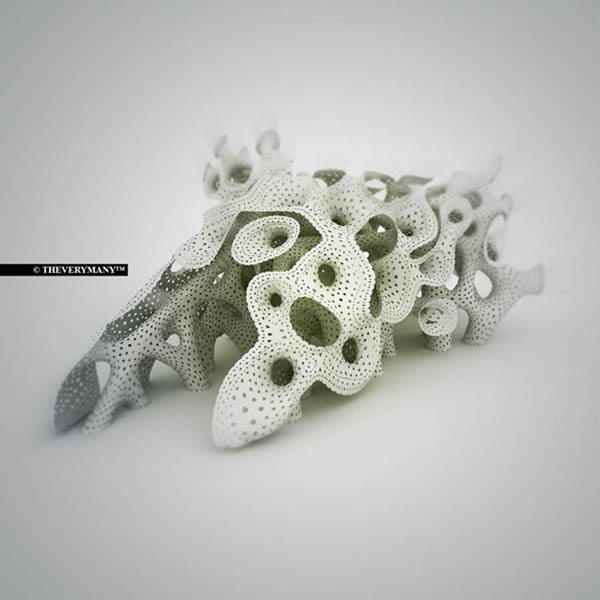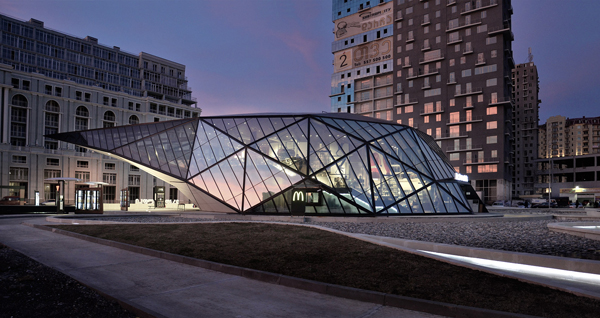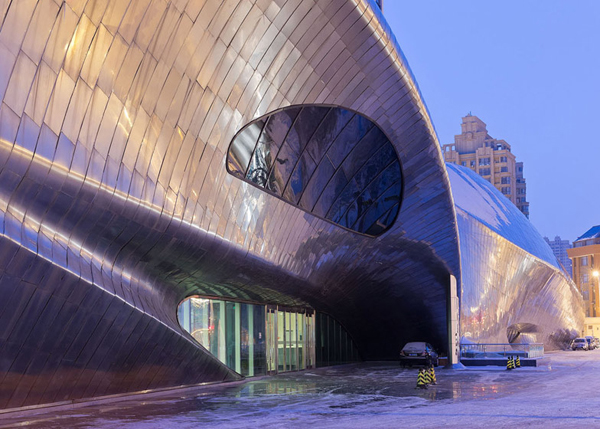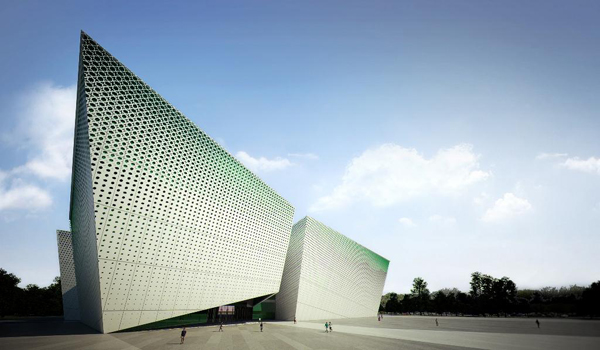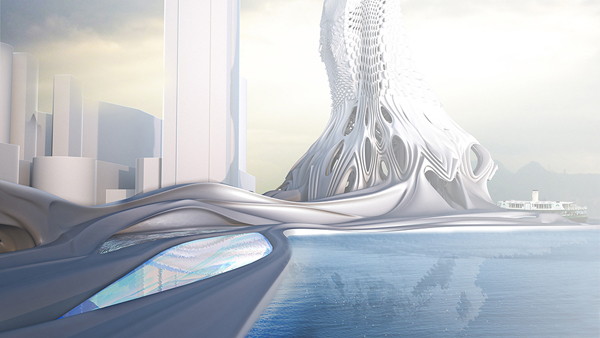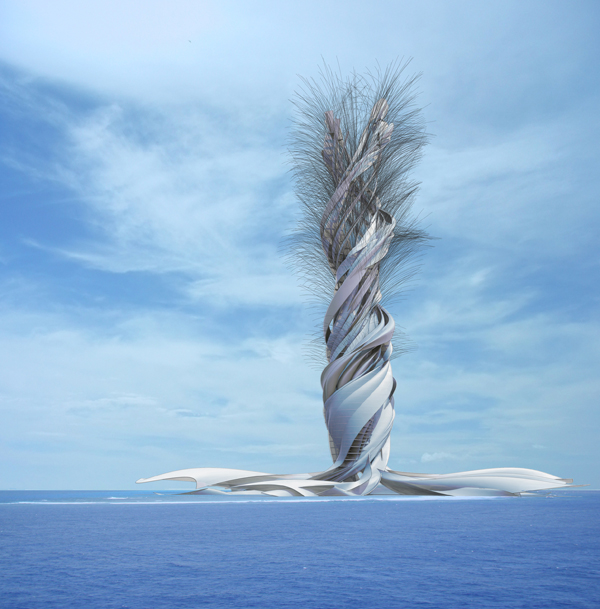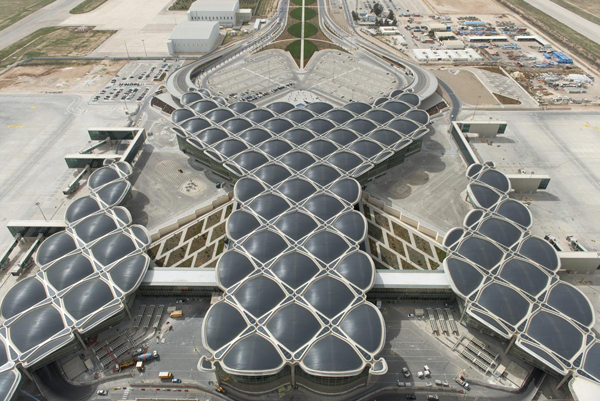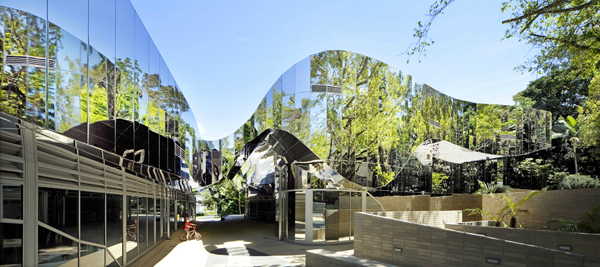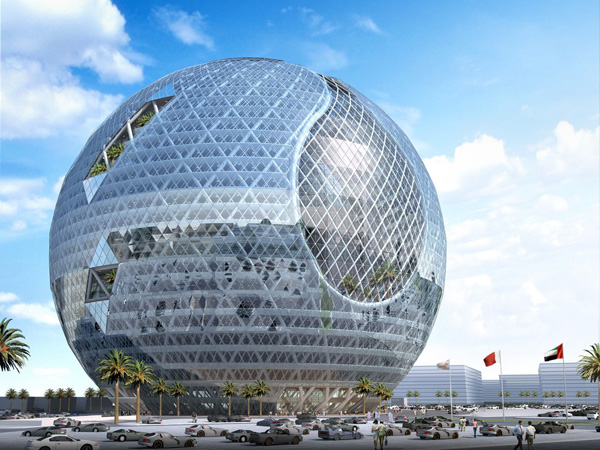Perforated aluminum pavilion resembling of a huge piece of coral is designed by Marc Fornes, French based architect of THEVERYMANY. Part of the permanent collection of the FRAC Centre, Orleans, the pavilion is a prototype which engages in numerous architectural experiments, known as text based morphologies. This 10 meters long, 4.5m high experimental space is assembled from 27 components, and the surface of the pattern is created of more than 155.000 asterisk-shaped perforations. Such prototypical structure requires massive number of elements, not only all unique but usually morphologically extremely different.
The form of the pavilion is developed through complex computational protocols. It is derived from methods such as form finding, form description, information modeling, generational hierarchy and digital fabrication. The pavilion is addressing some important issues like the paradigm shift from linear spaces, not necessarily on a formal level, but more in order to engage a multiplicity of social situations. Being the test space for series of experiments, the assembly is also an investigation into transformations from network to surface condition. Read the rest of this entry »

